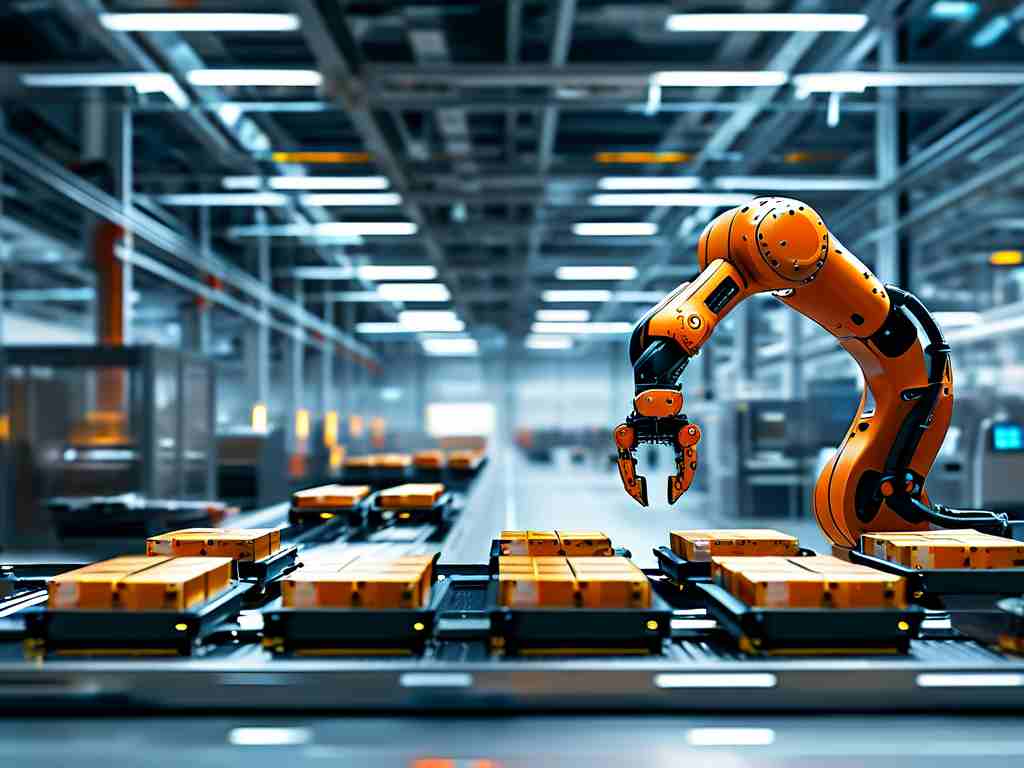The evolution of robotic loading systems has reached a pivotal moment, driven by the demand for precision and speed in industrial automation. Recent advancements in sensor integration, adaptive algorithms, and modular hardware design are redefining how factories handle material transfer, packaging, and assembly line operations. This article explores the technical foundations of next-gen rapid-loading robots and their transformative impact across industries.

Core Technologies Behind Speed Optimization
Modern high-speed robotic loaders rely on three interconnected innovations. First, millimeter-wave radar sensors now achieve 0.02mm positioning accuracy at 200Hz refresh rates – 8× faster than traditional laser guidance systems. This enables real-time trajectory adjustments during high-velocity movements. Second, hybrid motion planning algorithms combine convolutional neural networks with traditional kinematics models, reducing computational latency by 43% compared to pure AI-driven systems. Third, vacuum-assisted grippers with self-calibrating suction arrays can reconfigure gripping patterns in 12ms, allowing single robots to handle 78 different component types without mechanical tool changes.
Industrial Implementation Case Studies
In automotive manufacturing, German automaker Bayerische Motoren deployed rapid-loading robots for engine block transfers. The system achieved 40 cycles/minute with 99.991% positioning accuracy, eliminating the need for manual quality checks. Meanwhile, Singapore-based electronics manufacturer FlexTronics reported a 22% reduction in PCB assembly costs after implementing vision-guided robotic arms that load components at 3.5cm/s precision speeds.
Energy Efficiency Breakthroughs
Contrary to assumptions about high-speed operations increasing power consumption, new regenerative drive systems recover up to 31% of kinetic energy during deceleration phases. The EC-9000 series from robotics firm OmniTech demonstrates this through capacitor-based energy storage modules that cut overall power demands by 19% during continuous 18-hour shifts.
Challenges in Real-World Deployment
While laboratory tests show impressive results, field implementations face unique hurdles. Vibration damping remains critical – at peak speeds exceeding 4m/s, harmonic resonances can distort sensor readings. Solutions like active counterbalance weights and piezoelectric stabilizers are being tested, with early adopters reporting 60% vibration reduction. Another challenge involves thermal management: high-cycle operations generate concentrated heat in actuator joints, requiring liquid-cooled servo motors that add 14% to unit costs.
Future Development Roadmap
The next phase focuses on cross-platform interoperability. The Open Robotics Alliance recently unveiled its Universal Loading Interface (ULI) 2.0 specification, enabling different manufacturers' robots to share motion data through a standardized API. Early trials show 17% faster synchronization in multi-brand robotic cells. Additionally, quantum computing simulations are being used to model molecular-level friction patterns, potentially enabling lubricant-free joints that could push operational speeds beyond current physical limits.
Economic Impact Analysis
According to the International Federation of Robotics, plants adopting rapid-loading systems see average ROI within 14 months. The technology particularly benefits high-mix production environments – a textile factory in Guangzhou reported 35% faster changeovers between fabric types using adaptive gripping systems. However, workforce retraining costs average $4,200 per operator, highlighting the need for government-industry upskilling partnerships.
Safety Considerations
Speed enhancements necessitate upgraded safety protocols. New generation systems incorporate predictive collision avoidance using LiDAR depth mapping and thermal signature analysis. When tested against ISO 10218-2 standards, these systems demonstrated 99.8% reliability in detecting human operators within 0.8m danger zones at full operational speeds.
As industries face mounting pressure to optimize production timelines, rapid-loading robotics emerges as a cornerstone technology. From energy recovery mechanisms to AI-enhanced motion planning, continuous innovation in this field promises to reshape manufacturing economics while addressing critical challenges in precision engineering and human-machine collaboration. The coming decade will likely witness these systems becoming as ubiquitous as conveyor belts in modern factories, fundamentally altering our approach to industrial automation.









